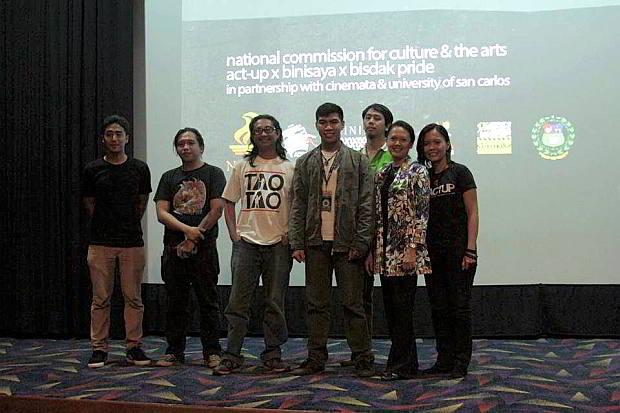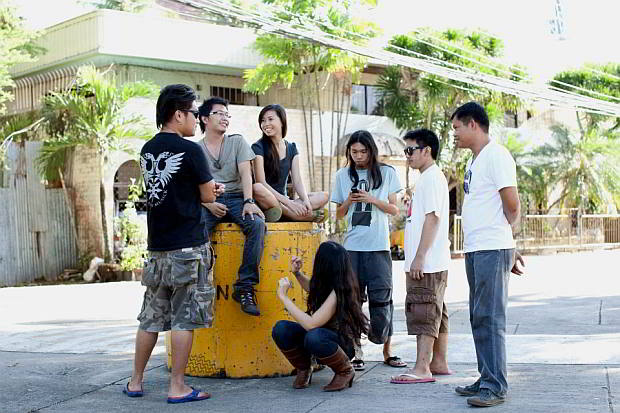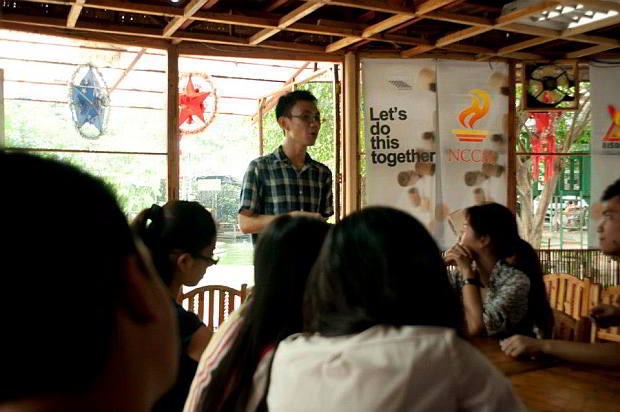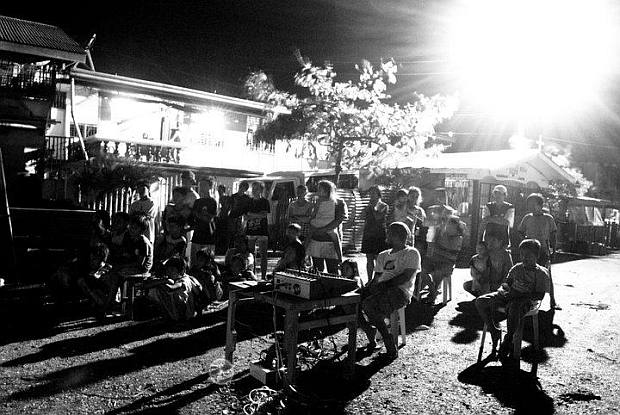by Grace Lopez
Where were you in 2009? For independent filmmaker Keith Deligero and friends, it was the year Binisaya was conceptualized in a small apartment crowded with filmmakers and former college classmates. In this particular case, Binisaya … THE film festival.
That year, Deligero flew back to Cebu from Manila where he was working to finish editing his short film “Uwan Init Pista sa Langit” (2009) with classmate and fellow Cebuano filmmaker Remton Zuasola. Likewise, his friends were also trying to beat the deadline for a film festival in Manila. While polishing his short film, Zuasola was finishing his stop-motion animation, “Mga Damgo” (2009).
Another filmmaker classmate, Idden de los Reyes, was secretly making his short film “Yawyaw” (2009). Admittedly, in the middle of this panic mode, Deligero kept wondering out loud why they had to submit their films somewhere else just to be seen.
For weeks, Deligero badgered his pals about a group screening of their films, just like visual artists do through group exhibits. Why not? “Nagsige kog yawyaw nga mag-organize lagi ug screening…the first Binisaya kay dapat unta weeks earlier …pero tungod ni bagyong Ondoy na-move siya to Oct. 30.” Even if Deligero was not able to attend the group screening due to the damage his apartment in Manila has sustained, thanks to typhoon Ondoy, he and Idden delos Reyes collaborated on what would become the iconic WAVES logo of Binisaya. Eventually, on that same year, Deligero gave up his job in Manila to go back to Cebu for good.
Those films they were working on? It went to several festivals and received its share of accolades. The group screening became a homecoming event for these films.
While they wanted to regularly continue this group screening, there was a lack of original films to screen.
Of course they couldn’t keep showing their own films. Two years later, Deligero tried to revive the idea of a collective screening, but this time as an organized festival that invites other filmmakers in the Visayas region to join. To add inspiration to the event, Deligero invited as guests a few friends from Manila like actor Ramon Bautista, noted editor of “Son of God” and “Zombadings” Lawrence S. Ang, filmmaker Bagane Fiola, and writer, film, and music reviewer Richard Bolisay to grace BINISAYA Film Festival in 2011.
The maiden festival was hosted by Tioseco Bohinc Film Archive and University of San Carlos under the Sinekultura program headed by Misha Anissimov, coordinator of the university’s Cinema program.
“When Cebuano filmmakers approached me about this particular festival idea … I immediately jumped at the opportunity to have the university as the first venue for this Binisaya Film Festival. The reason is because it came from the grassroots, it came from the filmmakers themselves. There is nobody holding their hand. That’s a first because for people to actually start taking action, taking the time to actually do the organization, it’s a thankless job. I wanted to do our part to support it.”
For BINISAYA Film Festival 2012, the festival received funding from the National Commission for Culture and the Arts. It partnered with Bisdak Pride headed by Roxanne Omega-Doron. A competitive section was opened and it marked the festival’s very first Best Short Film winner: Katapusang Labok (Last Strike) by Cebuana filmmaker Aiess Alonso. The film competed in the Short Film Corner, Cannes Film Festival 2013 and to other film festivals abroad.
BINISAYA Film Festival 2013 partnered with ACT-UP Cebu spearheaded by filmmaker Chloe Veloso. George Macapagal’s Unod became the festival’s short film winner. Cebuano filmmaker Christian Linaban’s critically acclaimed feature “Aberya” closed the festival.
A twin idea with the birthing of BINISAYA Film Festival was the experimental plan of creating a feature film for every festival made by seven upcoming filmmakers based in Cebu. The film will be titled after the names of the days of the week. Hence, the film “Biyernes Biyernes” (2011) debuted and opened the maiden BINISAYA Film Festival followed by “Sabado Sabado” (2012) and “Domingo Domingo” (2013). The project not only tapped new filmmakers, but also fresher storylines and filmic styles. The films not only reflect the cinematic tastes of the year, but they also document the different techniques applied by promising filmmakers, the use of new technology in making films, and the overall progress of the festival.
Moreover, the practice of the annual shuffling of organizing partners of the festival further promotes the fresh ideas and encourages bold interpretations of the values promoted by BINISAYA.
Collaboration has always been the driving force of the festival.
Now under the umbrella of non-profit organization Binisaya Movement, BINISAYA Film Festival 2014 has independent label Bomba Press as it’s organizing partner.
The public can look forward to the screening of works by Asian filmmakers this year. As laudable the objective of appreciating our own films is, it is imperative that we can also witness snippets of the lives of our Asian neighbors to gain more perspective of our being Filipinos, being Cebuanos. “Nituo ko na kaya nato maka come up ug culturally relevant and at the same time personal short films,” said Deligero. Needless to say, Cebuano films are at par with the world’s best.
This year, to accommodate the screening of the Asian films, the festival has merged the Panorama and Inter-islands sections and called it BINISAYA Shorts 2014. Anyone living in Cebu can submit a film about Cebu (Panorama), while those who are not from here can submit a film for competition or exhibition as long as there is the Bisaya dialect or Bisaya crew member (Inter-island).
BINISAYA aims to spread the waves of films made by Cebuanos. To create that appreciation, the festival had to overcome challenges that characterize every worthy endeavor, such as budget, support, learning the ropes of mounting a festival. To create alternative venues, part of the challenge is for BINISAYA to be peripatetic in order to share the experience of films projected on any screen (even the old “telon”) outdoors in as many places in the Philippines, especially the remote areas such as Biliran or Camotes. This will connect ourselves as a people, or as Benedict Anderson puts it, as an “imagined community.” Let us truly see ourselves in our very own films.
BINISAYA Film Festival runs from
Sept. 19-20 at USC-TC CAFA Theater.






